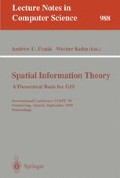Abstract
The present study investigates the effect of two distinct processing modes on object location and appearance updating during a guided walk without vision. As a calibration procedure, 12 subjects rotated a head-fixed miniature model until it matched the memorized orientation of the corresponding object, to measure initial (mis)perception of object orientation before the walking task. In the main experiment, observers either continuously kept track of the memorized object appearance during the walk (object-centered task), or they deduced object attributes at a terminal viewing position from continuous trajectory-mapping and knowledge of the object appearance at the initial position (trajectory-centered task), depending on the experimental session. Heading toward the memorized object location and object model rotation supplied information on respectively object location and orientation. Results showed that the two processing modes affected differently spontaneous walk velocity, object orientation updating and retrieval time. Estimation of walked distance and spatial inference processes are the two main sources of errors when updating object location and orientation while walking blind under external guidance.
This research was supported by a doctoral Grant from the Centre National d'Etudes Spatiales to the first author. We thank Michel Ehrette and Michel Loiron for the technical assistance they provided, respectively, in the stimuli fabrication and HF transmission setting up.
Preview
Unable to display preview. Download preview PDF.
References
Amorim M-A, Loomis, JM, & Fukusima, SS (1995) Spatial updating of objet shape during real and imagined perspective change following visual preview. Proceedings of the ICPA-8 Conference Poster Session, Marseilles, France
Brown C, Durrant-White H, Leonard J, Rao B, Steer B (1989) Centralized and decentralized Kaiman filter techniques for tracking, navigation, and control. Revised Technical Report 277, Computer Science Department, University of Rochester NY
Cochran WG, Cox GM (1957) Experimental designs. Toronto: John Wiley & Sons
Durrant-White HF (1990) Sensor models and multisensor integration, In Cox IJ, & Wilfong GT (eds) Autonomous robot vehicles. New York: Springer-Verlag, pp 73–89
Ferrigno G, Pedotti A (1985) ELITE: A digital dedicated hardware system for movement analysis via real-time TV signal processing. IEEE Trans on Biomed Eng 32:943–950
Fukusima SS, Loomis JM, Da Silva JA (1995) Visual perception of egocentric distance as assessed by triangulation. Manuscript submitted for publication.
Gibson JJ (1979) The Ecological Approach to Visual Perception. Boston MA: Houghton-Mifflin
Glasauer S, Amorim M-A, Vitte E, Berthoz A (1994) Goal-directed linear locomotion in normal and labyrinthine-defective subjects. Exp Brain Res 98:323–335
Golledge RG, Klatzky, RL, Loomis, JM (1994) Cognitive mapping and wayfinding by adults without vision. In J. Portugali J (ed) The construction of cognitive maps
Huttenlocher J, Presson CC (1973) Mental rotation and the perspective problem. Cogn Psychol 4:277–299
Kosslyn S (1981) The medium and the message in mental imagery: A theory. Psychol Rev 88:46–66
Lee DN (1980) Visuo-Motor Coordination in Space-Time. In Stelmach GE, Requin J (eds) Tutorials in motor behavior. Amsterdam: North-Holland, pp 281–293
Levine M, Jankovic IN, Palij M (1982) Principles of spatial problem solving. J Exp Psychol: Gen 111:157–175
Loarer E, Savoyant A (1991) Visual imagery in locomotor movement without vision. In Logie RH, Denis M (eds) Mental Images in Human Cognition. Elsevier Science, pp 35–46
Loomis JM, Da Silva JA, Fujita N, Fukusima SS (1992) Visual space perception and visually guided action. J Exp Psychol: HPP 18:906–921
Loomis JM, Klatzky RL, Golledge RG, Cicinelli JG, Pellegrino JW, Fry PA (1993) Nonvisual navigation by blind and sighted: Assessment of path integration ability. J Exp Psychol: Gen 122:73–91
Mittelstaedt ML, Glasauer S (1991) Idiothetic navigation in gerbils and humans. Zool Jahrb Abteil Zool Physiol der Tiere 95:437–435
Mittelstaedt H, Mittelstaedt M (1980) Homing by path integration in a mammal. Naturwiss 67:566
Philbeck JW, Loomis JM (1995) A comparison of two indicators of perceived egocentric distance under full-cue and reduced-cue conditions. Manuscript submitted for publication.
Pinker S, Finke RA (1980) Emergent two-dimensional patterns in images rotated in depth. J Exp Psychol: HPP 6:244–264
Rieser JJ (1989) Access to knowledge of spatial structure at novel points of observation. J Exp Psychol: Learn, Mem, & Cogn 15:1157–1165
Rieser JJ, Rider, EA (1991) Young children's spatial orientation with respect to multiple targets when walking without vision. Dev Psychol 27:97–107
Stevens A, Coupe P (1978) Distortions in judged spatial relations. Cogn Psychol 10:422–437
Author information
Authors and Affiliations
Editor information
Rights and permissions
Copyright information
© 1995 Springer-Verlag Berlin Heidelberg
About this paper
Cite this paper
Amorim, M.A., Glasauer, S., Corpinot, K., Berthoz, A. (1995). Object orientation and location updating during nonvisual navigation: The characteristics and effects of object-versus trajectory-centered processing modes. In: Frank, A.U., Kuhn, W. (eds) Spatial Information Theory A Theoretical Basis for GIS. COSIT 1995. Lecture Notes in Computer Science, vol 988. Springer, Berlin, Heidelberg. https://doi.org/10.1007/3-540-60392-1_13
Download citation
DOI: https://doi.org/10.1007/3-540-60392-1_13
Published:
Publisher Name: Springer, Berlin, Heidelberg
Print ISBN: 978-3-540-60392-4
Online ISBN: 978-3-540-45519-6
eBook Packages: Springer Book Archive

